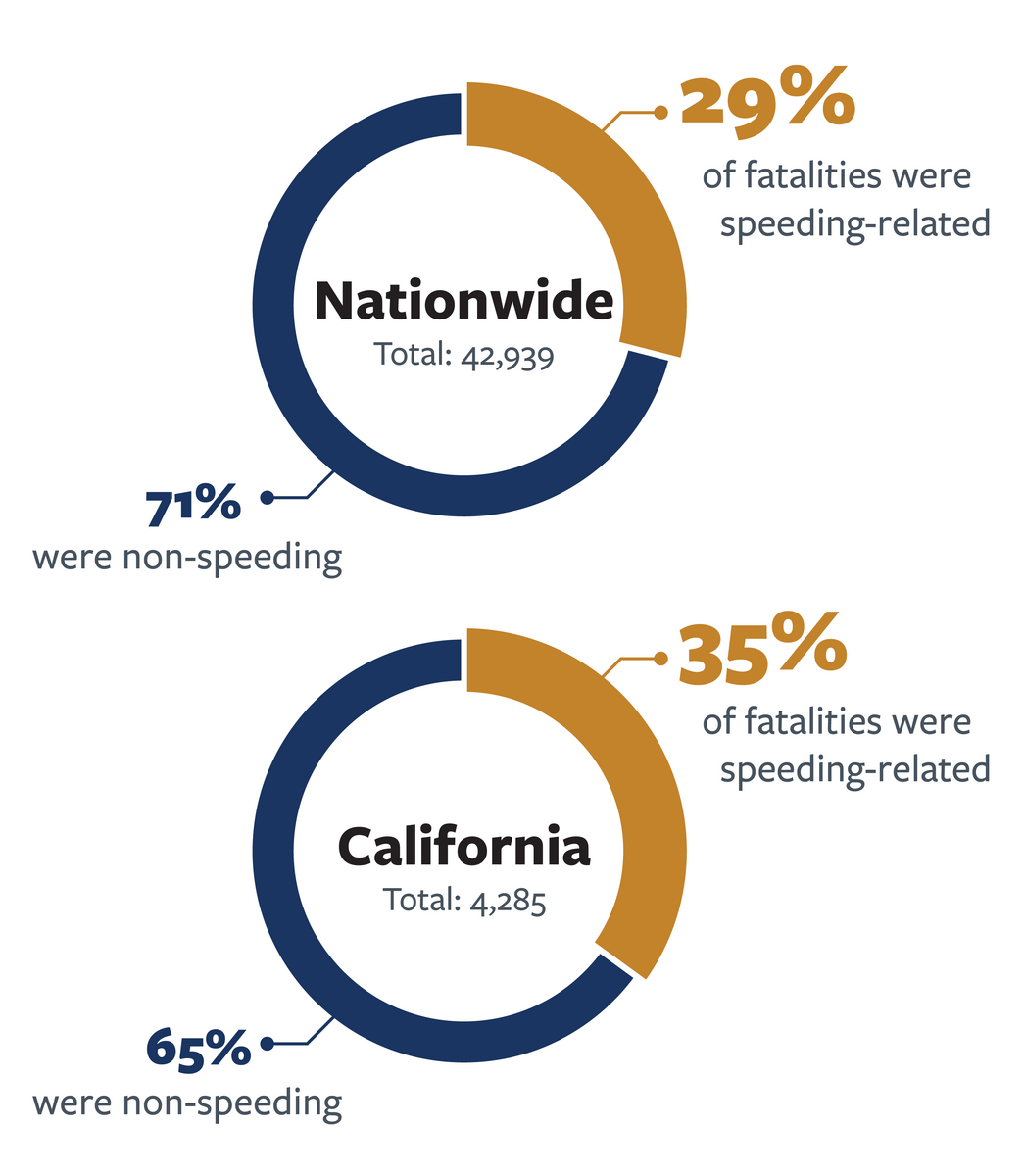
Speeding remains a significant contributor to traffic fatalities across the United States. Despite advancements in vehicle safety and enforcement measures, excessive speed continues to endanger lives on the road. Understanding the scope of speeding-related crashes and the effectiveness of speed limit enforcement is crucial for improving highway safety and reducing traffic fatalities.
Speeding Fatalities: A Persistent Threat
In 2023, speeding was a factor in 11,775 deaths, accounting for 29% of all traffic fatalities in the United States. This statistic underscores the ongoing challenge that speeding poses to traffic safety. Despite a 4.3% overall decrease in motor vehicle traffic deaths from 2022 to 2023, the proportion of fatalities involving speeding remained significant. Speeding-related crashes not only result in fatalities but also contribute to a substantial number of injuries. In 2022, over 300,000 people were injured in crashes where speeding was a contributing factor. These incidents often involve aggressive driving behaviors, such as tailgating and erratic lane changes, which further increase the risk of severe outcomes.
The Role of Speed Limits and Enforcement
Speed limits are established based on thorough analyses of road conditions, traffic patterns, and safety data. The national maximum speed limit, once set at 55 mph during the 1970s energy crisis, has since been adjusted, with many states now permitting higher maximum speed limits on certain roadways. However, higher posted speed limits can lead to increased average speeds among drivers, potentially elevating the risk of fatal crashes.
Law enforcement officers play a critical role in enforcing speed limits and deterring excessive speeding. Through the use of radar, speed cameras, and patrols, officers aim to identify and penalize speeding drivers, thereby promoting adherence to traffic laws. Despite these efforts, challenges persist in curbing speeding incidents, particularly on interstate highways where higher speeds are more common.
Technological Interventions: Intelligent Speed Assistance
Advancements in vehicle technology offer promising avenues for enhancing speed compliance. Intelligent Speed Assistance (ISA) systems, for instance, can alert drivers when they exceed posted speed limits or even automatically adjust vehicle speed to align with legal limits. These systems rely on GPS data and onboard cameras to monitor speed limit data in real-time.
The integration of ISA into vehicles has the potential to significantly reduce speeding-related crashes. By providing immediate feedback to drivers or intervening when necessary, ISA can mitigate instances of unreasonable speed and promote safer driving behaviors. As these technologies become more widespread, they may serve as valuable tools in the broader effort to enhance traffic safety.
Demographics and Risk Factors
Certain demographic groups are disproportionately represented in speeding-related fatal crashes. Young male drivers, particularly those aged 15 to 24, exhibit higher tendencies toward aggressive driving and speeding behaviors. In 2022, 35% of male drivers aged 15-20 and 32% of those aged 21-24 involved in fatal crashes were speeding.
These statistics highlight the need for targeted interventions, such as educational campaigns and graduated licensing programs, aimed at young drivers. By addressing the specific risk factors associated with this demographic, policymakers and safety advocates can work toward reducing the incidence of speeding-related fatalities.
Legal Consequences of Speeding
Speeding violations carry significant legal repercussions, including fines, points on a driver’s license, and potential license suspension. In cases where speeding results in fatal or injury crashes, drivers may face more severe penalties, such as criminal charges or civil liability. These consequences underscore the importance of adhering to posted speed limits and recognizing the dangers of excessive speeding.
Moreover, repeated traffic violations can lead to increased insurance premiums and long-term financial burdens. Understanding the legal and economic implications of speeding is essential for promoting responsible driving behaviors and enhancing overall traffic safety.
FAQ on Speeding Fatalities Statistics in USA
What percentage of traffic fatalities are caused by speeding?
According to the National Highway Traffic Safety Administration, speeding was a factor in 29% of all traffic fatalities in the U.S. in 2023. These speeding fatalities highlight the serious danger of exceeding posted speed limits and reinforce the need for continued focus on traffic safety and enforcement.
How does excessive speeding increase the risk of fatal crashes?
Excessive speeding reduces a driver’s ability to react to road hazards, increases stopping distance, and makes crash impacts more severe. As speeds climb above the posted limit or reasonable levels, the likelihood of fatal and injury crashes rises sharply, especially on interstate highways and in areas with high traffic volumes.
What are absolute speed limits, and how are they enforced?
Absolute speed limits are the maximum speeds legally allowed on a roadway, typically indicated by posted signs. If a driver exceeds this maximum limit, they can be ticketed regardless of whether their speed was considered safe under the circumstances. Law enforcement officers monitor compliance using radar and speed cameras to reduce speeding incidents and related crashes.
What is Intelligent Speed Assistance, and how can it help?
Intelligent Speed Assistance (ISA) is a vehicle technology that alerts drivers when they exceed posted speed limits and can even limit engine power to prevent speeding. ISA supports traffic safety by reducing speeding drivers and lowering the risk of speed-related crashes, especially in areas known for aggressive driving and traffic violations.
What are the legal consequences of speeding-related fatal crashes?
Drivers involved in speeding-related fatal crashes may face criminal charges, license suspension, or civil lawsuits, depending on the severity of the incident and local traffic laws. In addition to legal penalties, a speeding ticket in these cases can result in long-term consequences, including increased insurance premiums and permanent driving record points.
Conclusion
Speeding remains a pervasive issue on U.S. roadways, contributing to a significant proportion of traffic fatalities and injuries. Efforts to mitigate this problem must encompass a multifaceted approach, including stringent enforcement of speed limits, technological innovations like Intelligent Speed Assistance, and targeted educational initiatives. By addressing the root causes of speeding and promoting a culture of safe driving, we can work toward reducing the toll of speeding-related crashes and enhancing the safety of all road users.

